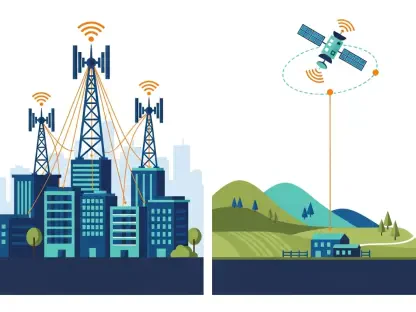As the Asia-Pacific region positions itself at the forefront of the digital connectivity revolution, recent investments and infrastructure developments capture attention. Notable initiatives, such as the deployment of advanced submarine cable systems, signal a transformative phase, reshaping global telecommunications dynamics. This analysis explores key trends in Asia-Pacific’s digital connectivity, unpacking strategic advancements and forecasting their implications across industries.
Driving Forces Behind Digital Infrastructure Innovation
Historically, the Asia-Pacific region has experienced a rapid digital evolution driven by industrial growth, technological advancements, and significant infrastructure investments. In recent years, the groundwork laid by foundational telecommunication systems has evolved into high-capacity digital networks. This progression places the region in a unique position to innovate further and address escalating global data communication demands.
Leading the Charge with Submarine Cable Systems
SJC2’s Role in Enhancing Digital Capacity
The Southeast Asia-Japan Cable 2 (SJC2) emerges as a pivotal infrastructure accomplishment, featuring a 10,500-kilometer length and extraordinary bandwidth capacity exceeding 126 Tbit/s. This state-of-the-art development not only strengthens connectivity between major economic hubs like Singapore, Hong Kong, and Japan but also integrates advanced optical technology, addressing Southeast and East Asia’s surging connectivity demands. Through strategic collaboration and investment from industry leaders like Singtel and China Mobile International, SJC2 reinforces the region’s competitive edge in global digital markets.
SJC2’s Strategic Impact and Regional Extensions
Beyond its primary trunk, SJC2’s strategic landing points in South Korea, Taiwan, Vietnam, Cambodia, and Thailand broaden its influence, maximizing connectivity benefits throughout the region. With key regional players such as Chunghwa Telecom and KDDI Corporation co-investing in this consortium, Asia-Pacific’s commitment to strengthening its digital backbone is evident.
Expanding Connectivity Through Collaborative Efforts
The broader regional trend highlights a strong commitment to enhancing intra-Asia network infrastructure. Significant investments characterize the period, as seen in the launch of prominent cable projects like the Asia Direct Cable (ADC), showcasing capacity targets that surpass 160 Tbit/s. These developments cater to the digital needs of diverse locations such as China, Japan, and the Philippines, setting the stage for unprecedented data exchange and facilitating technological evolution.
Anticipating Continued Growth and Emerging Trends
Recent demands for enhanced digital infrastructure arise from burgeoning AI applications and robust market growth. This demand has facilitated projects like the Asia United Gateway East (AUG East) cable system, scheduled for completion by 2029. AUG East serves as a testament to the region’s foresight in fostering stable, high-capacity connections across Asia-Pacific and beyond.
Similarly, the E2A submarine cable initiative, anticipated to be operational by 2028, strengthens links between Japan, Taiwan, South Korea, and the U.S., reflecting the region’s strategic depth in digital connectivity. The ALPA cable project aims to bolster interconnectivity, supporting innovation and economic growth.
Maximizing Asia-Pacific’s Connectivity Leadership
The Asia-Pacific region’s proactive approach defines its telecommunications landscape, as evidenced by investments in groundbreaking infrastructure like SJC2. The commitment to enhancing digital interconnectivity reflects a mutually beneficial relationship between stakeholders, driving the digital economy forward while setting the stage for increased technological leadership.
In reflecting on these developments, stakeholders must seize opportunities by investing in resilient digital infrastructure and forging strategic partnerships. These efforts should prioritize diversified cable systems that ensure robust, sustainable connectivity. In conclusion, Asia-Pacific has demonstrated that its leadership in digital connectivity is both crucial and transformative, pointing to a promising horizon full of opportunities and global influence.









